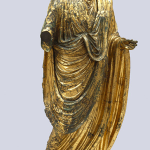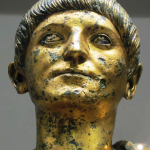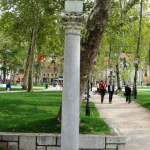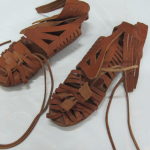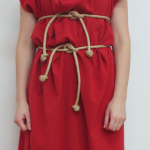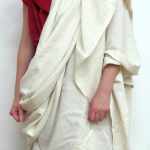Citizen of Emona
In 1836, an ancient statue of a young man was discovered in Ljubljana, and it was given the name Citizen of Emona. Based on its clothing style and hair, we can conclude it was made some time during the early 2nd century AD. On first glance the statue appears to be made entirely of gold, but it is in fact bronze and merely gilded. It represents one of the rare preserved Roman portraits that do not portray an emperor, and it once graced the grave of an affluent Emona townsman.
The statue is wearing typical Roman clothes – tunic, toga and sandals. The tunic was in Roman times worn by men and women alike. Important citizens were allowed to hang a long sheet of wool fabric, the toga, across their shoulders, while women seen wearing togas were branded as prostitutes and unfaithful wives. Instead of the toga, married women put on the stola which was considered appropriate for ladies.



